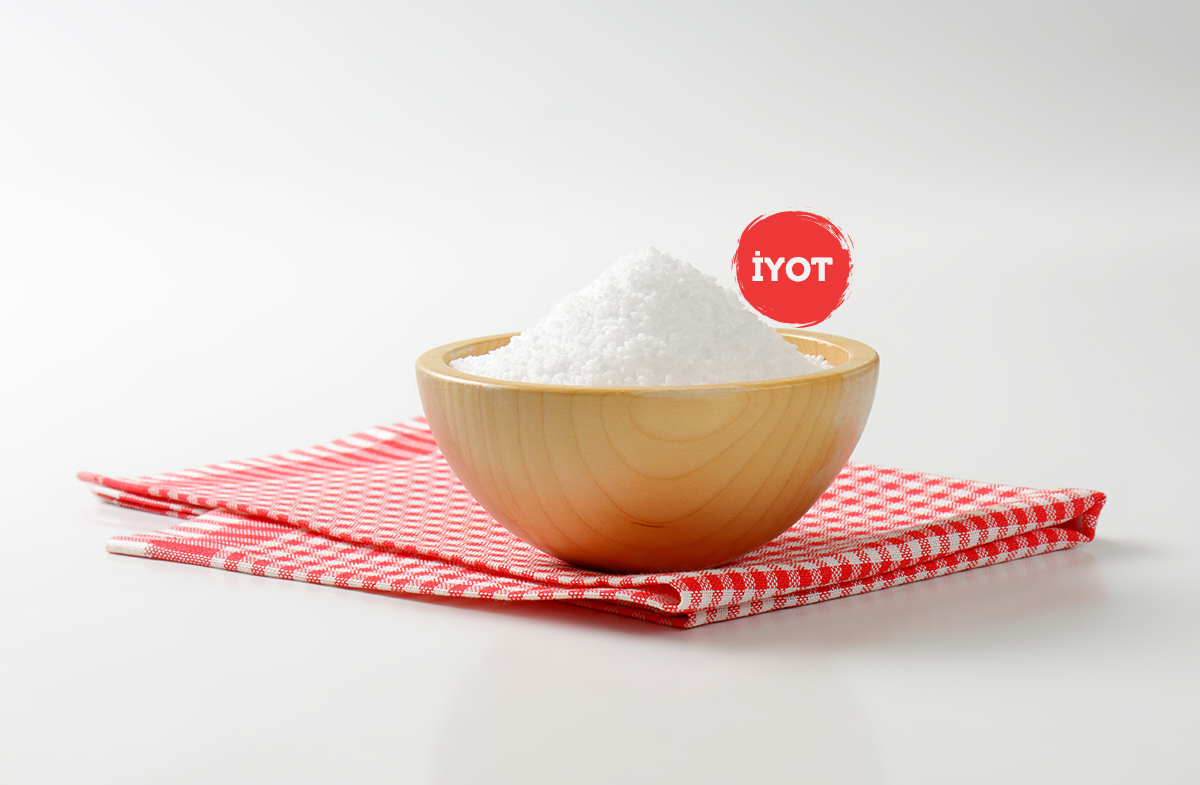
Nutritional deficiencies are a common public health problem in both developing and developed countries. Many strategies have been brought from past to the present to tackle with nutritional deficiencies. So, what is food fortification? What food fortification initiatives has implemented so far?
Nutritional Deficiencies
Vitamin and mineral deficiencies as major public health problems are both common in developed and developing countries. It is indicated that vitamin and mineral deficiencies are responsible for 10% of global health burden. Vitamin and mineral deficiencies can cause many health problems with or without symptoms. Children at growth and developmental age and women at child-bearing age are risky groups. Iron, vitamin A and iodine deficiencies are the most common micro nutrient deficiencies worldwide. According to World Health Organization (WHO), iron deficiency is the cause of about 800,000 deaths each year. For vitamin A deficiency, the frame is similar. According to WHO data, 7 million of children under 5 years of age lose their lives caused by vitamin and mineral deficiencies. The tackle of countries with nutritional deficiencies has been continuing from the past to the present. In order to tackle with nutritional deficiencies, policies aimed at fortificate foods with vitamins and minerals started to be implemented in the 1920s.
History of Food Fortification
In 400s B.C. soldiers’ drinks was enriched with iron (powder) to increase the strength. Doctor Melanpus and this is accepted as the first fortification implementation. Then in 1831, the French physician Boussinggault raised the idea of adding iodine to the salt to prevent goiter disease. Fortification of salt with iodine was first initiated in the world in 1920s in Switzerland and the USA. Especially during the World War- I and World War -II, in order to prevent nutrient deficiencies, food fortification was introduced in food processing with fortification of salt with iodine, margarine with vitamins A and D milk with vitamin D, flour with vitamins B1 and bread with iron.
What is food fortification and how is it implemented?
Food enrichment is commonly defined as the addition of one or more essential nutrients to a food, that it is normally not contained in the food, for the purpose of preventing demonstrated nutrient deficiency in the population or specific population groups. The addition of one or more essential nutrients to a food whether or not it is normally contained in the food, for the purpose of preventing a demonstrated deficiency of one or more nutrients in the population described as fortification. In Codex Alimentarius “General Principles for the Addition of the Basic Nutrients to the Foodsâ€, nutrient enrichment and nutrient fortification are mentioned as synonymous concepts. The addition of nutrients in order to compensate for nutrient losses during transport, processing and storage of foods is defined as “replacementâ€. Food fortification has become a health policy in many countries which adopt the strategy of preventing nutritional deficiencies with food fortification, also with the impact of successful practices. Today, depending on the prevalence of deficiencies, mandatory as a state policy or voluntary depends on industry enrichment practices are continuing.
Food fortification examples from the world and from Turkey
In Central America, the fortification of sugar with vitamin A is an example mandatory implementation. With this policy, fortificated sugar has become the major source of vitamin A in El Salvador, Guatemala, Honduras and Nicaragua. Fortification of table salt with 50-70 mg/kg of potassium iodide or 25-40 mg/kg of potassium iodate within the context of “Prevention of Iodine Deficiency Diseases and Salt Iodination Program†of Turkish Ministry of Health General Directorate of Family Planning and Maternal and Child Health and in line with “Table and Food Industry Salt Declaration is an an ongoing mandatory practice in Turkey launched in 1998. While the frequency of iodized salt consumption was 18,2% in 1995, it increased to 85,4% in “Turkey Demographic Health Survey†carried out in 2008. In Turkey the prevalence of moderate and severe iodine deficiency was found to be 58%, whereas it decreased to 28.2% in 2008. Today, fortification of salt with iodine is being implemented as a mandatory practice in 120 countries. American Medical Association Food Council has reported that the fortification of milk with vitamin D, in addition to its potassium and calcium content, might be effective against rickets. Milk, breakfast cereals, yogurt, cheese, infant formulas and margarines are the most commonly used foods in voluntary fortification with vitamin D.
Grains such as flour and bread have also fortificated in 1940s. Flours were fortificated with thiamine, niacin, riboflavin and iron, and folic acid was added to these nutrients in 1996. In Turkey, a mandatory fortification policy is not implemented for flour, bread or other cereals, however, breakfast cereals are voluntarily fortificated with thiamine, riboflavin, iron and folic acid.
As a result, there have been implementations demonstrating that food fortification practices are e¢ective and successful in the prevention of nutrient deficiencies from 1900s to the present. Today, it is known that mandatory and voluntary fortifications provide significant benefits against nutrient deficiencies such as iodine and iron. However, it is reported that food fortification may have individually consequences, while attention is also drawn to the importance of appropriate monitoring.


